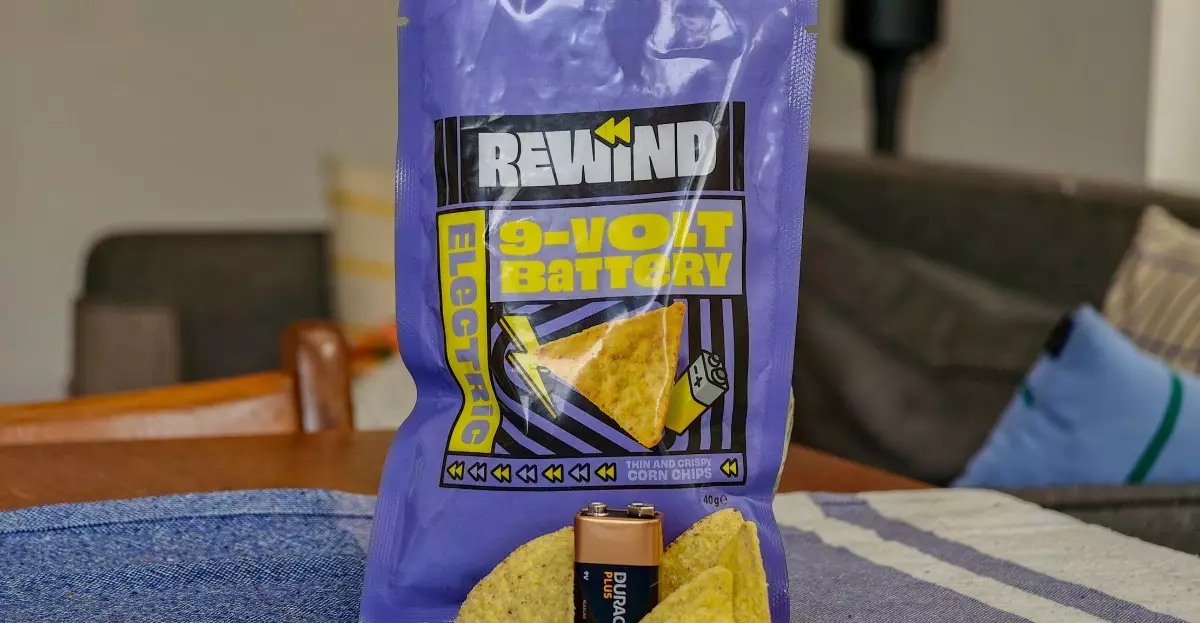In the ever-evolving world of snack innovation, companies constantly seek to push boundaries and challenge consumer perceptions. Rewind’s daring venture into creating a limited-edition tortilla chip flavored like a 9V battery exemplifies this thirst for originality. Unlike traditional snack flavors that rely on familiar tastes—cheese, barbecue, or spicy sriracha—this product taps into a visceral, almost primal sense of curiosity. It doesn’t merely aim to satisfy pallets but dares to evoke emotions rooted in childhood memories or the thrill of the bizarre. This audacious approach embodies a larger trend in culinary chemistry: making the edible experience an adventure, a talk-provoking event that blurs the line between taste and sensation.
The Power of Nostalgia and Shock Value
The concept of flavor development based on nostalgia—particularly childhood memories—can be a powerful marketing tool. The idea of mimicking the metallic, antiseptic tang of licking a 9V battery triggers a sort of collective childhood subconscious. Rewind’s strategy is not just about flavor; it’s about creating an emotional connection through shock and surprise. The metallic aftertaste and acidic initial hit mimic the sensory experience of battery licking, transforming a mundane, often ignored childhood act into a gourmet curiosity. It’s a calculated risk—embracing discomfort is a way to stand out in a saturated snack market, and it caters to consumers seeking novelty and stories to share.
The Fine Line Between Innovation and Intolerance
While pushing boundaries is admirable, it’s essential to scrutinize the health implications. The article notes that licking a 9V battery is likely safe, but Rewind itself clarifies that it doesn’t endorse ingesting actual batteries. This distinction exists because the metallic, mineral-like flavoring used in the chips is a carefully crafted approximation, not an actual metallic or battery component. This begs the question—how far can snack brands go before their creations cross into hazardous territory? The metallic tang achieved through chemical blending is clever, but it also risks desensitizing consumers to genuine health warnings about battery consumption. The endeavor’s success hinges on responsible marketing and consumer understanding that these are purely flavor experiences, not edible batteries.
Consumer Appeal and the Future of Flavor Exploration
Despite its provocative concept, Rewind’s snack raises compelling questions about the future of culinary experimentation. Will consumers embrace tasting experiences that evoke discomfort, or will they recoil at the notion of consuming “battery-flavored” foods? The answer largely depends on how well brands frame such innovations—as adventurous, fun, and non-threatening. Sampling limited releases can serve as a testing ground for acceptability. If these chips gain traction, they could open doors for more unconventional flavors inspired by memories or sensations that aren’t traditionally associated with snacking. This could redefine what consumers expect from their snack choices—pushing them to embrace risk and novelty in pursuit of unique culinary sensations.
Rewind’s 9V battery-flavored chips demonstrate a bold leap into the realm of sensory experimentation. While the experience might be unsettling or even unpleasant—like the lingering metallic aftertaste—their underlying message is one of fearless innovation. It’s a reflection of a cultural moment hungry for the extraordinary, for stories, and for sensory experiences that challenge the mundane. Such ventures, if managed responsibly, could revolutionize the way we think about flavor and risk, proving that sometimes, the most memorable culinary adventures come from the most unexpected and audacious concepts.

